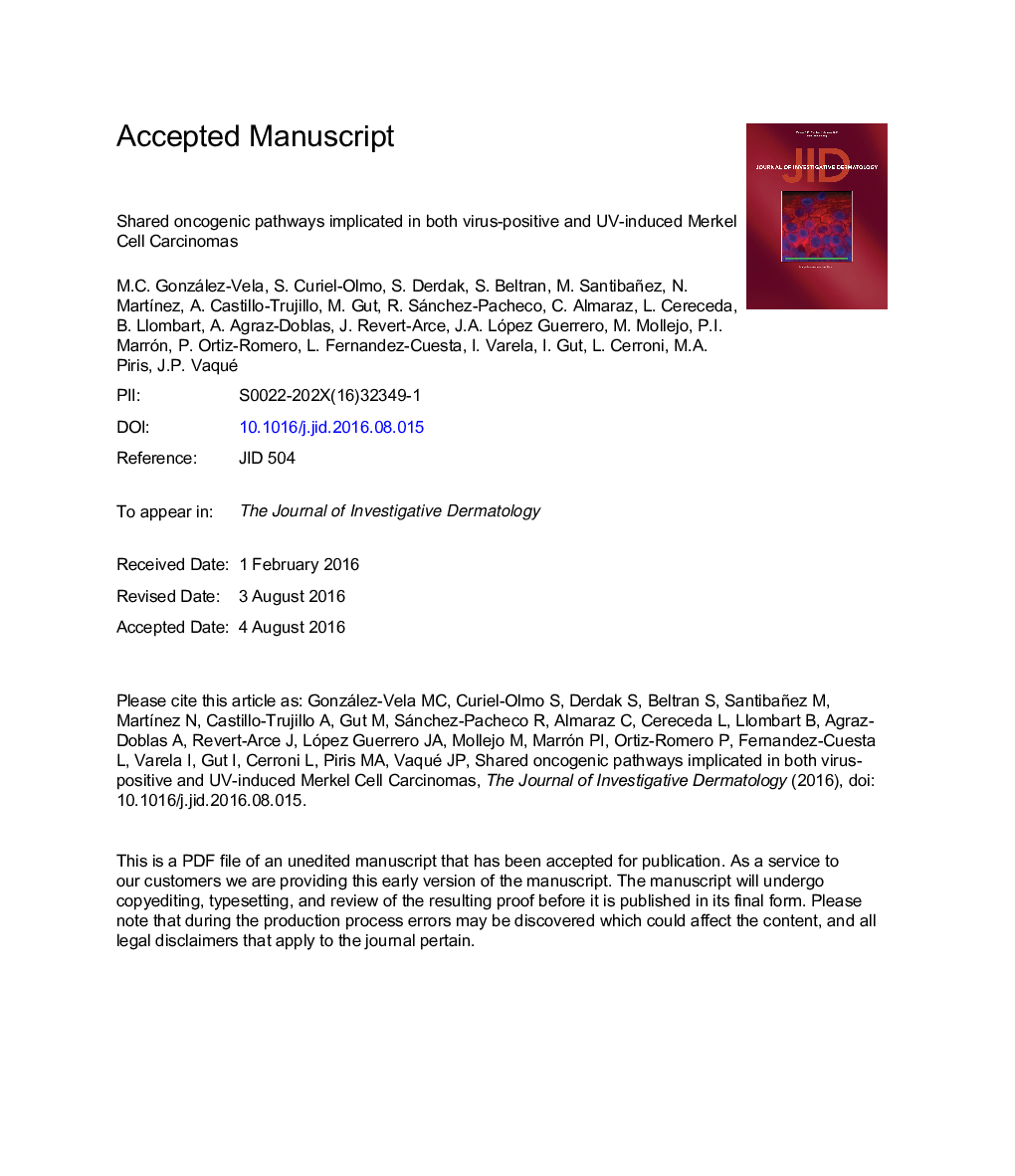| Article ID | Journal | Published Year | Pages | File Type |
|---|---|---|---|---|
| 5649844 | Journal of Investigative Dermatology | 2017 | 29 Pages |
Abstract
Merkel cell carcinoma (MCC) is a highly malignant neuroendocrine tumor of the skin whose molecular pathogenesis is not completely understood, despite the role that Merkel cell polyomavirus can play in 55-90% of cases. To study potential mechanisms driving this disease in clinically characterized cases, we searched for somatic mutations using whole-exome sequencing, and extrapolated our findings to study functional biomarkers reporting on the activity of the mutated pathways. Confirming previous results, Merkel cell polyomavirus-negative tumors had higher mutational loads with UV signatures and more frequent mutations in TP53 and RB compared with their Merkel cell polyomavirus-positive counterparts. Despite important genetic differences, the two Merkel cell carcinoma etiologies both exhibited nuclear accumulation of oncogenic transcription factors such as NFAT or nuclear factor of activated T cells (NFAT), P-CREB, and P-STAT3, indicating commonly deregulated pathogenic mechanisms with the potential to serve as targets for therapy. A multivariable analysis identified phosphorylated CRE-binding protein as an independent survival factor with respect to clinical variables and Merkel cell polyomavirus status in our cohort of Merkel cell carcinoma patients.
Keywords
Related Topics
Health Sciences
Medicine and Dentistry
Dermatology
Authors
MarÃa del Carmen González-Vela, Soraya Curiel-Olmo, Sophia Derdak, Sergi Beltran, Miguel Santibañez, Nerea MartÃnez, Alfredo Castillo-Trujillo, Martha Gut, Roxana Sánchez-Pacheco, Carmen Almaraz, Laura Cereceda, Beatriz Llombart,
